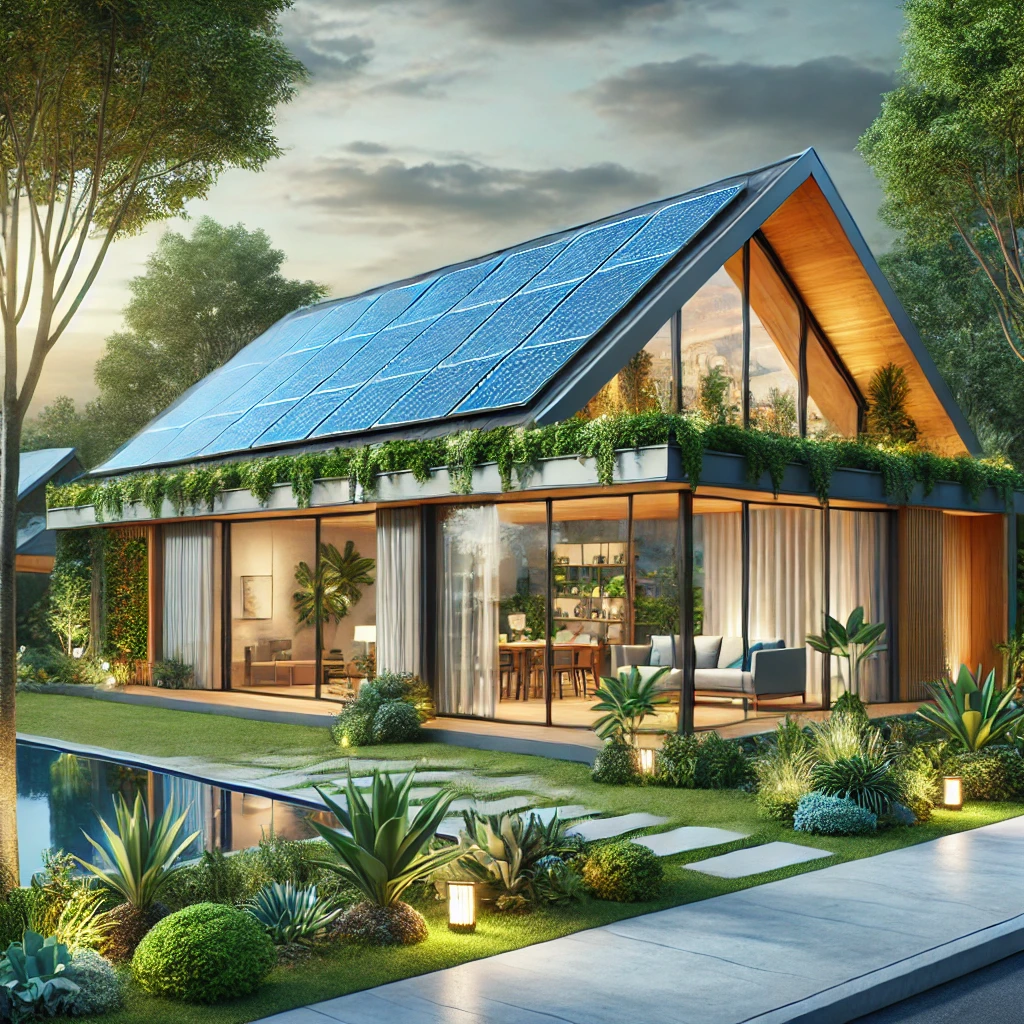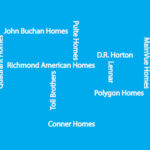As the world becomes increasingly conscious of environmental sustainability, the demand for green building practices in new construction continues to rise. In cities like Seattle, where eco-conscious living is a priority, homebuyers are more likely to choose homes that incorporate sustainable materials, energy-efficient features, and designs that minimize their environmental impact.
In 2024, green building is no longer just a trend—it’s a must for developers and homebuilders who want to stay competitive. This article explores the top green building trends shaping the future of new construction and why they’re essential for both builders and buyers alike.
1. Net Zero Homes: The Future of Green Construction
Net zero homes are homes that produce as much energy as they consume over the course of a year. These homes are designed to be ultra-efficient, using renewable energy sources like solar panels to meet all their energy needs.
- Energy-Efficient Design: Net zero homes use high-performance insulation, advanced windows, and airtight construction to minimize energy loss. These features ensure that homes require less heating and cooling, significantly reducing energy consumption.
- On-Site Renewable Energy: The key to net zero homes is generating renewable energy, usually through solar panels or wind power. By producing their own energy, homeowners can drastically reduce their utility bills, often reaching zero or even negative energy costs.
- Why It’s Trending: Seattle’s focus on sustainability makes it an ideal market for net zero homes. With the city’s commitment to reducing carbon emissions and energy costs rising, buyers are looking for homes that can offer long-term savings and environmental benefits.
Pro Insight: For builders, designing net zero homes can be a major selling point, especially in eco-conscious communities like Ballard or Capitol Hill. Buyers in these areas are willing to pay a premium for homes that align with their sustainability goals.
2. Passive House Design: Energy Efficiency Taken to the Next Level
Passive House design is a rigorous standard for energy efficiency that drastically reduces a building’s ecological footprint. It’s one of the most energy-efficient building standards in the world and is gaining popularity in Seattle as builders look to create homes that use minimal energy for heating and cooling.
- Super Insulation: Passive homes use thick layers of insulation to keep the indoor temperature stable, reducing the need for heating in the winter and cooling in the summer. This insulation, combined with high-performance windows, creates a tight building envelope that prevents energy loss.
- Heat Recovery Ventilation (HRV): Passive homes are equipped with HRV systems, which bring in fresh air from outside while recovering heat from the outgoing air. This process ensures that homes remain energy-efficient while maintaining healthy indoor air quality.
- Minimal Energy Use: A Passive House uses up to 90% less energy for heating and cooling compared to a typical home, making it an attractive option for Seattle’s environmentally conscious buyers.
Pro Insight: Passive House design is particularly well-suited for Seattle’s climate, where heating costs can be high in the winter. Builders who embrace this design standard can differentiate their homes by offering ultra-low energy bills and superior indoor comfort.
3. Sustainable Building Materials: The Shift Toward Eco-Friendly Choices
Using sustainable materials in construction is a key part of green building practices. These materials are sourced responsibly and are designed to have minimal environmental impact, both during construction and over the home’s lifecycle.
- Recycled and Reclaimed Materials: Builders are increasingly using materials like recycled steel, reclaimed wood, and recycled concrete to reduce the environmental impact of construction. These materials not only save resources but also add unique character to homes, especially in urban areas like Fremont and Georgetown, where industrial-chic aesthetics are popular.
- Low-Impact Concrete: Traditional concrete production is one of the largest sources of CO2 emissions. In response, builders are turning to low-carbon concrete alternatives that reduce the carbon footprint of construction.
- Bamboo and Cork Flooring: Bamboo and cork are two sustainable flooring materials that have gained popularity due to their rapid renewability. Bamboo grows quickly and is durable, making it an eco-friendly alternative to hardwood flooring. Cork is also highly sustainable and provides natural insulation, reducing energy usage.
Pro Insight: Buyers in Seattle are drawn to homes that incorporate sustainable materials, not just for their environmental benefits but also for the unique design elements they offer. Builders who source local or reclaimed materials can also market their homes as being connected to the city’s history and environmental ethos.
4. Smart Home Technology: Sustainability Meets Convenience
Smart home technology is evolving to do more than just add convenience—it’s now a powerful tool for energy management. In 2024, homes that integrate smart systems to optimize energy use are becoming the norm, especially in cities like Seattle where sustainability is a priority.
- Smart Thermostats: Devices like the Nest or Ecobee allow homeowners to control heating and cooling systems remotely, optimizing energy use based on occupancy and even weather forecasts. These thermostats can reduce energy usage by 10-12%, helping homeowners save on utility bills.
- Smart Lighting: Smart lighting systems use sensors to adjust brightness based on natural light and room occupancy, reducing unnecessary energy use. Some systems even allow homeowners to control lights from their phones, offering a new level of energy efficiency and convenience.
- Energy Monitoring Systems: Smart energy monitors track a home’s energy consumption in real time, providing homeowners with insights into where energy is being wasted and how to reduce usage. This can lead to significant savings and a lower carbon footprint over time.
Pro Tip: For developers, including smart home technology in new builds is not only a way to attract tech-savvy buyers but also a way to highlight the home’s long-term energy savings potential. Smart homes are particularly appealing in tech-driven neighborhoods like South Lake Union and Belltown.
5. Water Conservation: Cutting Down on Usage
Water conservation is a growing concern in the Pacific Northwest, and new homes are increasingly incorporating features that reduce water use without sacrificing comfort.
- Low-Flow Fixtures: Installing low-flow toilets, faucets, and showerheads is an easy and effective way to cut down on water consumption. These fixtures use less water without impacting performance, making them a must-have in new builds.
- Rainwater Harvesting Systems: Some new homes in Seattle are being equipped with rainwater harvesting systems that collect and store rainwater for irrigation, flushing toilets, and other non-potable uses. This reduces reliance on city water and lowers water bills.
- Greywater Systems: Greywater recycling systems allow homeowners to reuse wastewater from sinks, showers, and washing machines for landscaping and irrigation. By reducing the amount of water that goes to waste, these systems help conserve water and lower utility costs.
Pro Insight: Builders who incorporate water-saving technologies can market their homes as eco-friendly and cost-effective, appealing to buyers who are conscious of Seattle’s water resources and rising utility costs. Homes in areas like West Seattle and Magnolia, which are known for larger lots and outdoor spaces, can especially benefit from rainwater harvesting and greywater systems.
6. Modular and Prefabricated Construction: Eco-Friendly and Efficient
One of the newest trends in green building is the rise of modular and prefabricated construction, which minimizes waste and can dramatically reduce construction time. These homes are built off-site in controlled environments, reducing the environmental impact of construction and improving energy efficiency.
- Reduced Waste: Prefabricated homes are built with precision in factories, which leads to less material waste compared to traditional on-site construction. This method also reduces the carbon footprint associated with transportation and construction waste.
- Faster Build Times: Modular construction allows for homes to be built in a fraction of the time it takes for traditional builds, reducing the amount of energy used during the construction process. This efficiency makes prefabricated homes an appealing option for buyers who want a green home without a lengthy build time.
Pro Tip: Modular homes are gaining popularity in areas like Rainier Valley and Beacon Hill, where buyers are looking for affordable, sustainable housing options. By embracing modular construction, builders can offer eco-friendly homes that appeal to buyers seeking both sustainability and efficiency.
Conclusion
The future of green building is here, and it’s reshaping the way homes are designed, built, and lived in. From net zero homes and smart technology to sustainable materials and water-saving innovations, these trends are becoming essential in Seattle’s real estate market, where buyers demand both sustainability and style. For builders and developers, staying ahead of these trends not only ensures that homes meet buyer expectations but also adds long-term value by reducing energy and water costs. As Seattle continues to embrace green living, homes that incorporate these features will remain highly desirable, offering both immediate benefits and long-term savings for homeowners.





